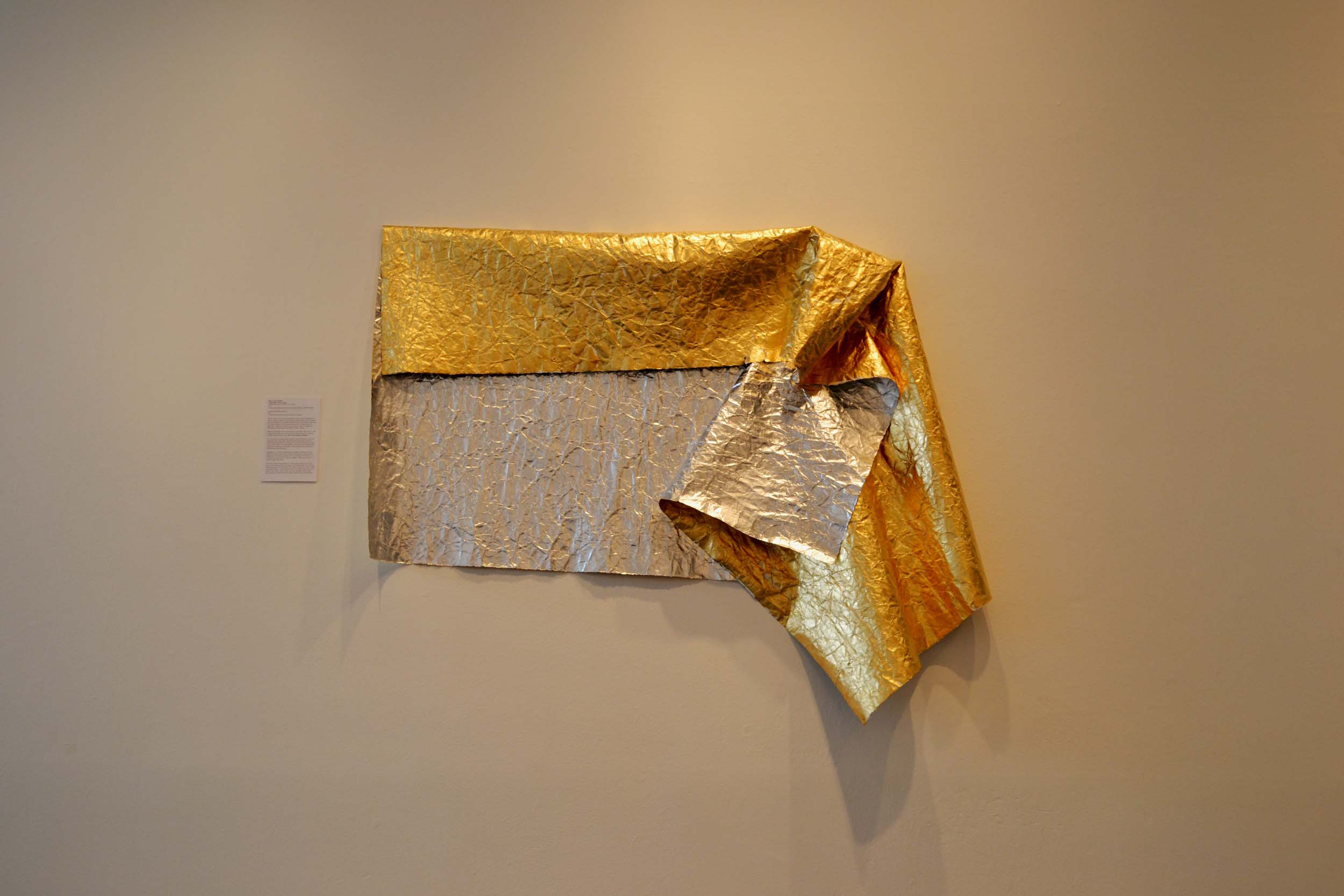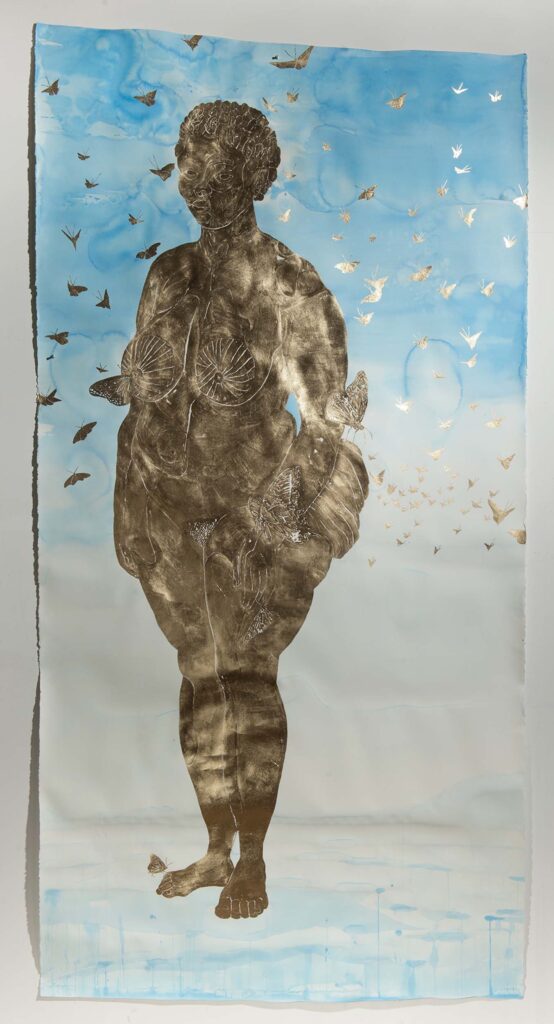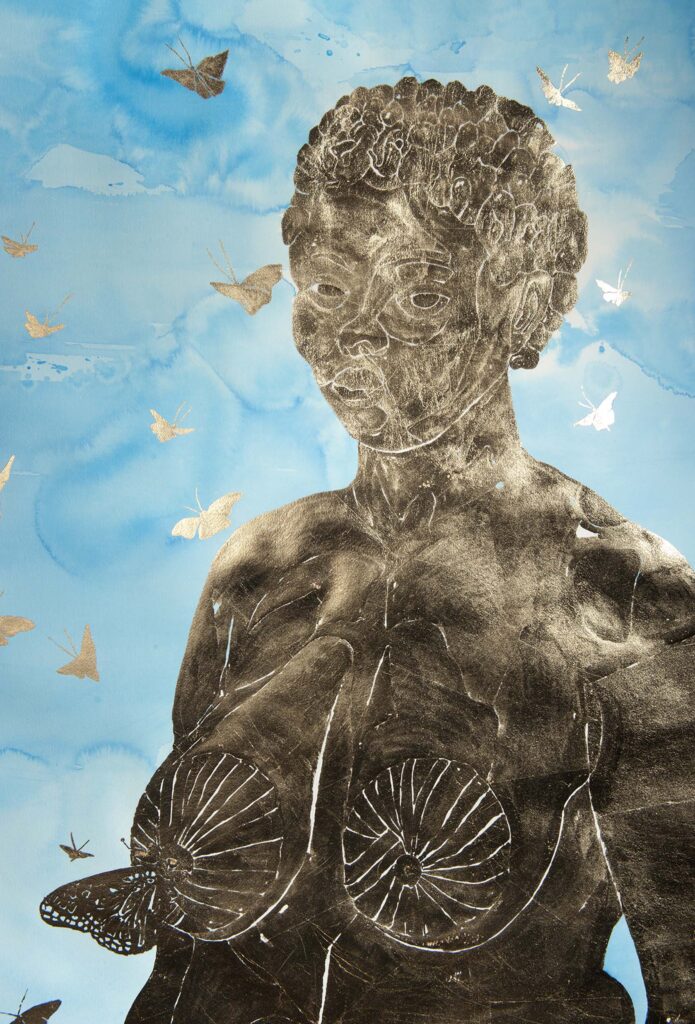Women with Their Work II: Reflections, 2018
In 2015, The New York Times published an article entitled, “Perceptions of Race at a Glance” about social psychologist (and MacArthur Grant recipient) Jennifer Eberhardt. Dr. Eberhardt studies the effect of unconscious ideas about race on the workings of the criminal justice system. Through a series of interactions, subjects are studied as to whom they visualize as dangerous. Participants overwhelmingly select black “looking” subjects.
Sight is a collaborative process between the eye and brain. Here, the eye is the receptor and the brain acts as the processor. Learned responses to signs and symbols complicate the process. This is where things get muddled.
My work begins as an appropriative gesture. I plumb the Internet, vernacular photographs and a wide range of printed materials from trade fashion and popular culture publications to academic texts to discover literal and pictorial sources. These sources are transformed by a variety of processes that include burning/laser technology, accumulation, embossing/debossing, interference, physical distressing and gilding.
Although I use a variety of transformative techniques, gilding has become central. This process allows me to construct monochromes with provocative ocular effects. The effects, much like those of a hologram, shift the focus of vision between images and text that are gradually revealed and expanses of reflective surface and sheen.
This “shift” creates an uncertainty as to what is on the surface as the viewer cannot rely on the typical frontal reading of a two-dimensional work, but must shift her perspective in order to take in the whole. In the process, sight is further complicated (and as a result delayed) as the viewer’s physical presence casts a shadow on the work’s surface. These works are activated by light and the degree and type of illumination offer endless opportunities for interpretation.


